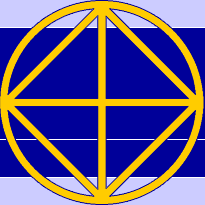Pictorial Worlds – Calling for Attention
I yesterday was at a fascinating conference of the Swiss fundation of certified non-profit organisations about Pictorial Worlds of NGOs. It was held at the Paul Klee museum – a place for images…
Pictures are used for fund-raising, for sensitizing the public and for informing about people in need. The discussions were about the effect of pictures, what is a good picture and what are the possibilities of the language of pictures. And where are limits and dangers of misuses.
There were very interesting inputs. The head of the media service of the catholic church showed how today there is such a flood of images, that images are destroying themselves. The speed of the image flood keeps increasing. There is a trend from static images to moving images. Images try to capture attention, to rise emotions, and this often by means of creating irritations.
As an example of irritation he showed an unusual video about accident prevention – there are more people dying by stumbling than by cars. Irritating pictures are often used, but they can (consciously or unconsciously hurt feelings like the exposition arranged with plasticized dead bodies or pictures hurting religious feeling like the Danish caricature of Mohammad. Personality rights can be violated, when images are used without the consent of the persons shown, especially with children from developing countries.
A well-known Swiss filmmaker spoke about his portraits of people living on the margin of society – people in need, physically or mentally handicapped people, so-called “local idiots”. He tries to give them a voice and show the individual reality, which might deviate from social norms. He tries to “meet levels” and not to stand above the portrayed ones.
The last speaker was from a marketing agency, he spoke about the problems of time and money in creating impact: You see about 2000 pictures a day, everybody wants to have your attention. He presented examples about what is a powerful image. He gave 9 theses, seemingly contradicting themselves:
The strongest image is positive – showing a video clip of positive emotions. The strongest image is negative – often used; is a symbol; is created in the head (he showed a text of an Indian campaign against killing female fetuses, just a text describing how you can kill the fetus and try 3 month later to get a boy…); can be just a phrase (an inspiring campaign of a Japanese city turning its destiny from a big coal mining town to a non-successful amusement park going bankrupt, and now to a city of love where there is no divorce -recreating its destiny and attracting people from all over the country); is costly; is simple; is an experience (a campaign of Red Cross Portugal selling hope in a shop); and is a reality.
The strongest image factor is the idea. And this is true also for other inspiring activities. Inspiration comes through ideas, and this is the moving factor – not money or greatness. Master DK says: “Energy follows thought”. This is an applied form of it.

The hall where the meeting took place. For me the red decoration was a symbol of the images crying for attention.




April 16th, 2010 at 8:12 am
bonjour mon ami comment va tu mersi pourton emails passe une bonne journee regarde sil te plais si tu peux avoir les secrets de lattraction en francais car mo je les est en anglais et que je conprends pas anglais bisous